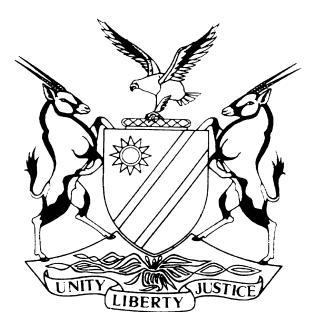7
REPUBLIC OF NAMIBIA

IN THE HIGH COURT OF NAMIBIA MAIN DIVISION, WINDHOEK
REVIEW JUDGMENT
Case Title: The State v Frans Mathew Nkandanga | Case No: CR 47 /2021 | |
High Court MD Review No: 867 / 2021 |
Division of Court: Main Division | |
Heard before: Mr Justice Liebenberg et Mr Justice January | Delivered on: 27 May 2021 | |
Neutral citation: S v Nkandanga (CR 47 /2021) [2021] NAHCMD 258 (27 May 2021) | ||
It is hereby ordered that:
| ||
Reasons for the order: | ||
indicating that the accused pleaded guilty. On the original charge sheet the words ‘Guilty (s. 112(1)(b))’ had been entered, but not to which offence.
‘[9] In our law a driver who “in a moment of crisis is confronted by the need to take safeguarding action must not be judged as though he had adequate time and opportunity to reflect and act with normal circumspection.” (See Stolzenberg v Lurie 1959(2) SA 67 (W) 74D-E). [10] A person faced with sudden emergency is treated differently insofar as allowance is made, on his part, for possible error of judgment. (See Marine & Trade Insurance Co. Ltd v Mariamah & Ano. 1978(3) SA 480 (A)). [11] In situations of sudden emergency “It is not every error of judgment which is excusable as amounting to negligence, but only one which a reasonably careful and skilled driver of a vehicle might commit. There can only be a moment of agony if the person whose conduct is in question had neither the time nor the opportunity to weigh the pros and cons of the situation in which he found himself.” (See Goode v SA Mutual Fire & General Insurance Co. Ltd 1979(4) SA 301(W) 307A).’
‘[16] In determining whether section 112(1)(a) is appropriate in casu, it is important to note that a person drives recklessly when he or she drives a motor vehicle in wilful disregard for the safety of persons or property. Negligent driving on the other hand entails driving a motor vehicle in a manner contrary to what a reasonable person in the position of the accused would have done. A reasonable person in the circumstances would have foreseen the possibility that a particular circumstance might exist and that his conduct might bring about a particular result and then take reasonable steps to guard against such possibility.’ (Emphasis provided)
‘80 Reckless or negligent driving (1) No person shall drive a vehicle on a public road recklessly or negligently. (2) Without restricting the ordinary meaning of the word "recklessly" any person who drives a vehicle in wilful or wanton disregard for the safety of persons or property shall be deemed to drive that vehicle recklessly. (3) In considering whether an offence has been committed under subsection (1), the court shall have regard to all the circumstances of the case including, but without prejudice to the generality of the foregoing provisions of this section, the nature, condition and use of the public road on which the offence is alleged to have been committed, the amount of traffic which at the time actually was, or could reasonably have been expected to be, upon that road and the speed at and manner in which the vehicle was driven.’ (Emphasis provided)
had to the provisions of section 80 (3) of the Road Traffic and Transportation Act. Moreover, that the answers of the accused were that he was driving at a speed of 40 km/h on a high way when he bumped an ant-hill on the road and lost control of the vehicle. Despite having pleaded guilty to the charge, the accused’s answers clearly raised a defence to the charge of reckless driving. In questioning the accused, the trail court did not satisfy itself that the accused drove the vehicle in a wilful disregard for the safety of persons or property because few or no questions were posed in that regard. In the absence thereof, the magistrate’s omission to explore such possibility resulted in a misdirection, vitiating the conviction on the charge of reckless driving which cannot be permitted to stand. [17] The primary purpose of questioning the accused in terms of section 112(1)(b) of the CPA following a plea of guilty, is to safeguard the accused against the result of an unjustified plea of guilty.6 Moreover, when the court questions the accused, it must ensure that he admits all elements of the offence in such way that it enables the court to conclude for itself whether the accused is guilty of the offence charged. The accused’s answers must establish an unequivocal plea of guilty. If there is any doubt, a plea of not guilty should be entered.7 [18] In the result, it is ordered:
| ||
| ||
J C LIEBENBERG JUDGE |
H JANUARY JUDGE | |
1 S v Motlogelwa (HC . 18/2012) [2012] ZANWHC 44 (4 December 2012).
2 S v Shigwele (CR 75/2020) [2020] NAHCMD 453 (2 October 2020).
3 1997 NR 108 (HC) 111C-D.
4 Motinyane v S (A238/2016) [2017] ZAFSHC 91 (25 May 2017).
5 S v Shigwele (CR 75/2020) [2020] NAHCMD 453 (2 October 2020).
6 The State v Mangundu (CR 67/2016) [2016] NAHCMD 316 (17 October 2016).
7 S v Combo and Another 2007 (2) NR 619 (HC).